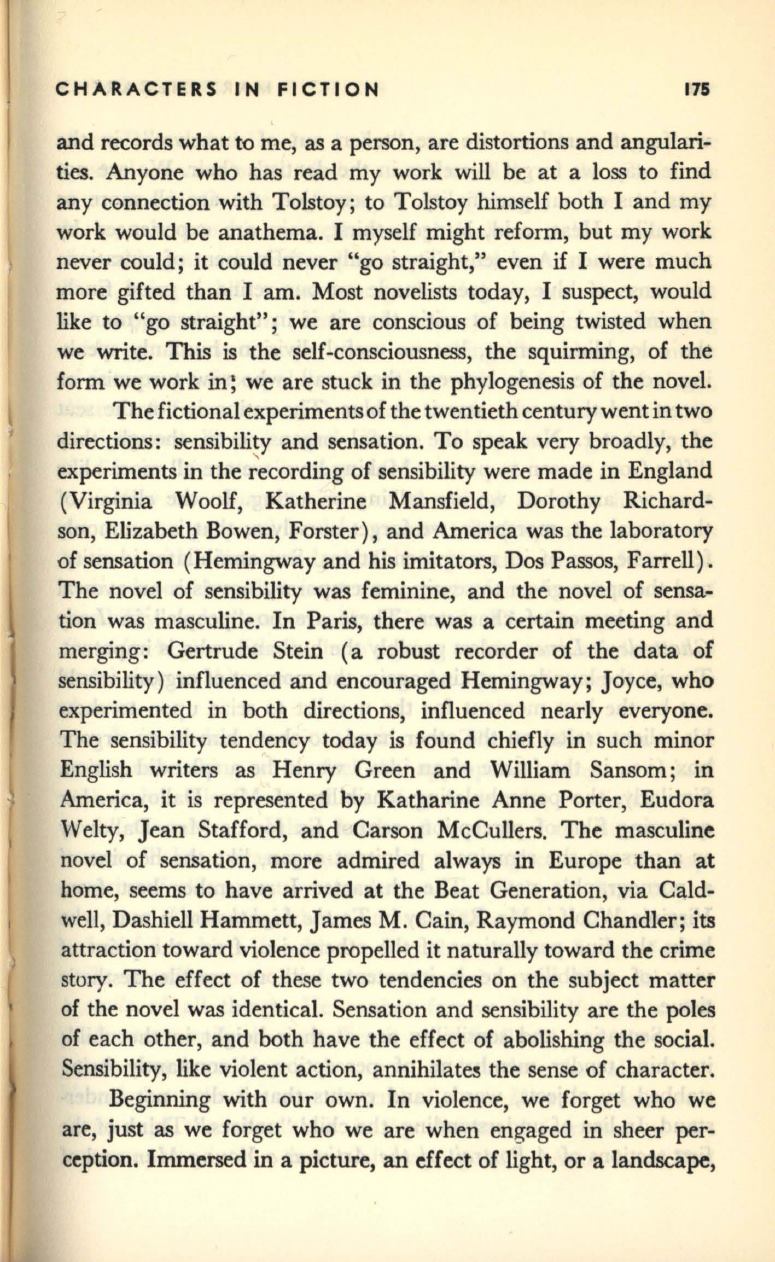
CHARACTERS IN FICTION
175
and records what to me, as a person, are distortions and angulari–
ties. Anyone who has read my work will be at a loss to find
any connection with Tolstoy; to Tolstoy himself both I and my
work would be anathema. I myself might reform, but my work
never could;
it
could never "go straight," even
if
I were much
more gifted than I am. Most novelists today, I suspect, would
like to "go straight"; we are conscious of being twisted when
we write. This is the self-consciousness, the squirming, of the
form we work in: we are stuck in the phylogenesis of the novel.
The fictional experiments of the twentieth centurywent in two
directions: sensibility and sensation. To speak very broadly, the
,
experiments in the recording of sensibility were made in England
(Virginia Woolf, Katherine Mansfield, Dorothy Richard–
son, Elizabeth Bowen, Forster), and America was the laboratory
of sensation (Hemingway and his imitators, Dos Passos, Farrell).
The novel of sensibility was feminine, and the novel of sensa–
tion was masculine. In Paris, there was a certain meeting and
merging: Gertrude Stein (a robust recorder of the data of
sensibility) influenced and encouraged Hemingway ; Joyce, who
experimented in both directions, influenced nearly everyone.
The sensibility tendency today is found chiefly in such minor
English writers as Henry Green and William Sansom; in
America,
it
is represented by Katharine Anne Porter, Eudora
Welty, Jean Stafford, and Carson McCullers. The masculine
novel of sensation, more admired always in Europe than at
home, seems to have arrived at the Beat Generation, via Cald–
well, Dashiell Hammett, James M. Cain, Raymond Chandler; its
attraction toward violence propelled it naturally toward the crime
story. The effect of these two tendencies on the subject matter
of the novel was identical. Sensation and sensibility are the poles
of each other, and both have the effect of abolishing the social.
Sensibility, like violent action, annihilates the sense of character.
Beginning with our own. In violence, we forget who we
are, just as we forget who we are when engaged in sheer per–
ception. Immersed in a picture, an effect of light, or a landscape,


